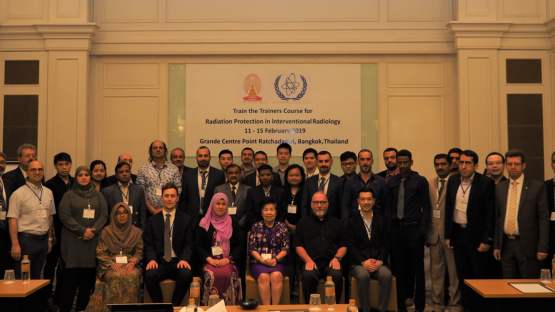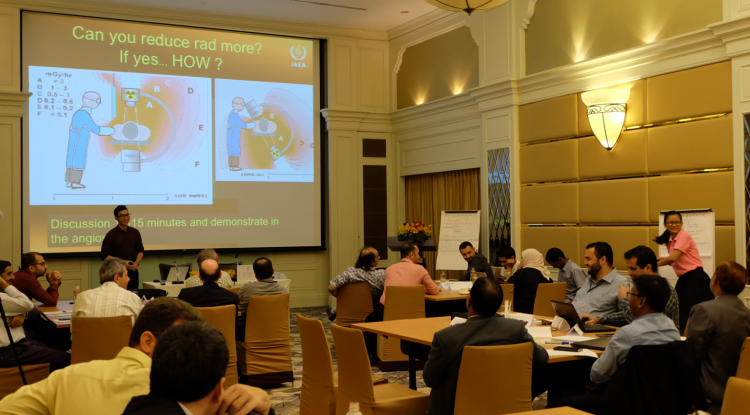Over thirty people from 10 countries in the Asia and Pacific region have completed a course for trainers that will enable them to share relevant safety precautions with counterparts in the region to ensure that patients receive the minimum exposure necessary to produce informative, accurate medical images.
Interventional radiology is a medical field in which X-rays, MRI and CT scans are deployed to produce images of the inside of a patient’s body. As these imaging techniques rely on radioactive sources, special precautions must be taken to ensure the safety of healthcare professionals, patients and the public. Due to the volume of healthcare professionals who rely on the regular use of ionizing radiation to exercise their duties, the Agency is empowering its Member States to deliver radiation protection training themselves. However, necessitates the establishment of a cohort of trainers equipped to design, organize and launch national capacity building events.
This is where the IAEA’s Train-the-Trainers courses come in—with trained trainers in place on the ground, countries can ensure the sustainability of their radiation protection capacities. The most recent course took place 11 - 15 February in Bangkok, Thailand, focusing on radiation protection in interventional radiology.
Organised within the framework of an ongoing, regional TC project[1], the training course was attended by more than 30 trainees from 10 countries in the Asia and Pacific region, in addition to international experts from Australia, Malaysia and Thailand. Through presentations and practical exercises designed to enhance the training-delivery skills of its participants, the course was able to explore the complete gamut of adult-learning themes, from the fundamentals of pedagogy to more practical considerations, such as the development of teaching aids, group communication and adult-learning theories.
Yahia Lahfi, a Senior Health Physics Researcher at the Atomic Energy Commission of Syria noted, “The important lecturing skills received during this course will help me to improve my capacity to build up a national training course in radiation protection.”
“The fundamental objective of the ongoing project is to improve the radiation safety infrastructure in the region, generally. Our training support is presently focussing on enhancing radiation protection in the medical sector, as it is both a priority for the participating Member States, as well as the most common application of radioactive isotopes in these countries,” said Marina Mishar, Programme Management Officer at the IAEA, who co-led the course alongside Anchali Krisanachinda of the King Chulalongkorn Memorial Hospital.
During the training course, the attending trainees agreed on an action plan for the creation of national training programmes in their respective Member States, as well as timelines for their implementation. Based on these action plans, it is expected that a sustainable, comprehensive training programme for radiation protection in interventional radiology will be firmly established in each participating Member State by 2020.
Following the concluding quiz, Masood Khalid Khan, the Head of the Radiation Protection Department in the Pakistan Atomic Energy Commission, noted: “Upon returning home, I will apply the pre- and post-quiz methodology to our training programmes, and I will also update our national training programmes to make them more interactive.”
A second edition of the Train-the-Trainers Course will be organized for ten other Member States in the Asia and Pacific region, to take place this later in 2019 in the United Arab Emirates. The second iteration of the course will draw on the lessons learned from its predecessor in Thailand, to provide an improved and comprehensive training delivery package.
The week of in-person teaching was complemented by online activities, such as quizzes which bookended the event, on the first and last days of the course, to evaluate the impact on participants’ skill levels. Finally, a visit was organised by the host to the King Chulalongkorn Memorial Hospital for participants to witness first-hand, best practices implemented by Thailand.






